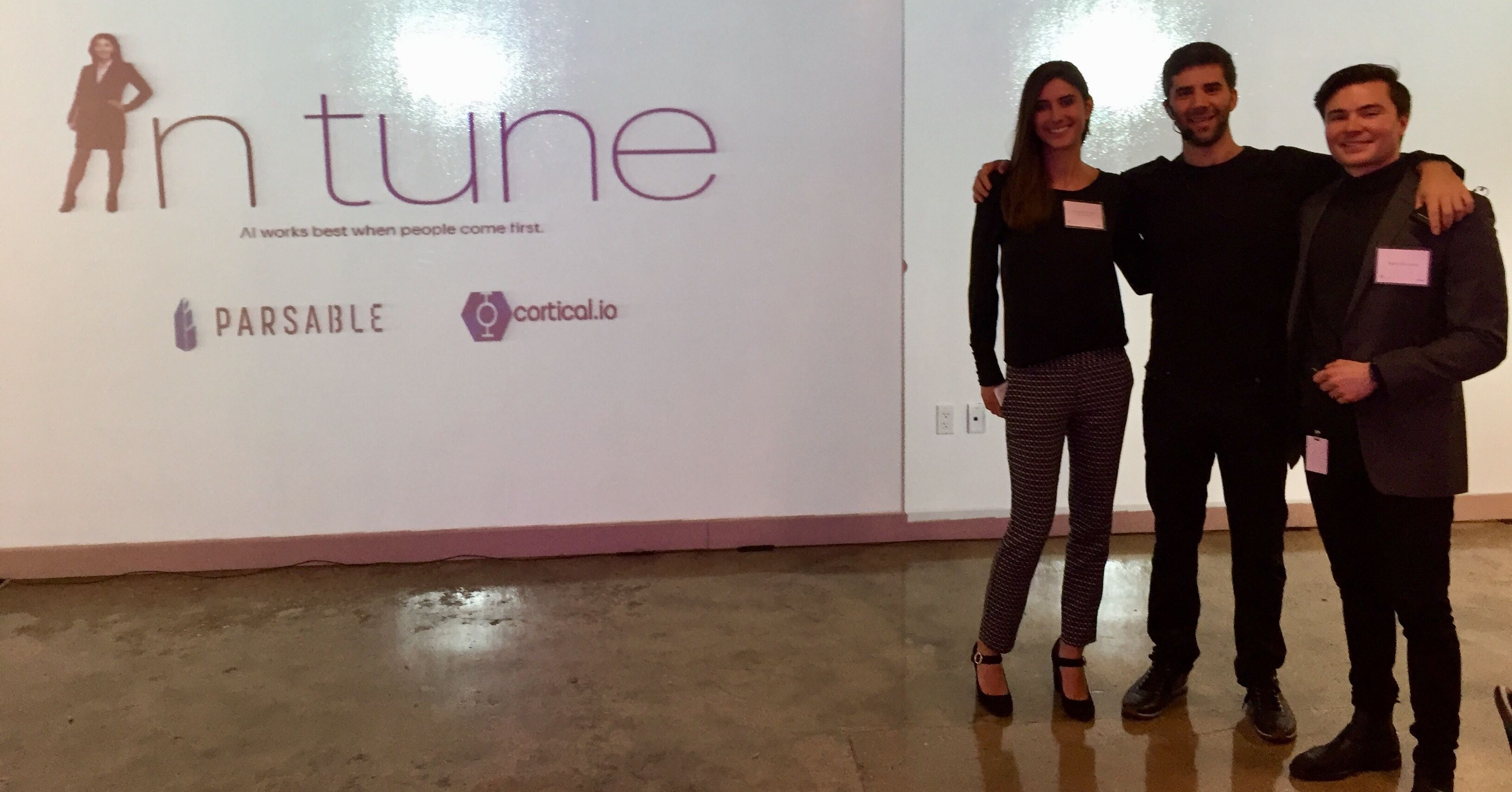Bringing AI to the Deskless Worker
Today, Accenture hosted an invite-only event, “InTune,” at its new SoHo Innovation Hub in New York City for nearly 50 Fortune 500 senior executives, business school professors and other industry experts with a focus on life sciences and consumer packaged goods (CPG). The topic focused on artificial intelligence (AI), future of work, and striking the balance between human and machine.
Parsable’s co-founder, Chase Feiger, led a talk on how Fortune 500 companies can unlock the potential of their deskless workforce and open up opportunities for AI through a Connected Worker platform.

He began by comparing and contrasting the “Great Divide” between the desk-bound and deskless workforce. Desk-bound workers have easy access to hardware (desktop computers, laptops, smartphones, tablets) and software (Microsoft Office, Slack, CRM systems) that help them vastly improve collaboration and productivity. High-speed Internet access is a given.
Deskless workers, on the other hand, spend their hours in industrial environments with no Internet access and where their collaboration and productivity tools consist of paper binders and walkie talkies; if they need to access experts, they often must walk or travel long distances across facilities. As a result, deskless teams often suffer from less-than-optimal productivity and lack of transparency, making it nearly impossible to meaningfully improve and optimize work processes.
Once the deskless workforce embraces digital technologies and becomes “connected workers,” an enormous amount of value and impact can be unleashed. Data now being captured from workers who were previously “disconnected” can lead to measurable improvements in how work can be done more efficiently, which directly affects the bottom line.
He also discussed how the limiting factor for AI is the quality and diversity of data, and in order to continually feed AI and make it more intelligent, it is important to have a workforce constantly generating high quality and diverse data.
If the deskless worker doesn’t even have a digital interface, then how can they take advantage of AI?
So where do companies start? Chase stated that the mobile device is the initial platform of choice to bridge the human workforce with its machine-based ecosystem. Given that 77 percent of Americans own a smartphone, according to Pew Research Center, using one for work poses an extremely low barrier to entry.
In answering questions around how mobile will ultimately lead to the further adoption of other technologies by the deskless workforce, Chase noted that it can pave the way for the integration of wearables, drones and AI in day-to-day work environments.
.jpg?width=4112&name=Image%20from%20iOS%20(2).jpg)
During the second part of his talk, he emphasized the importance of the human element to enterprise technology development, drawing from examples of how deskless workers are also consumers and can more strongly benefit from a simple, intuitive and collaborative (human-to-human, human-to-machine) user experience.
As consumers, we expect and depend on easy-to-use mobile apps to get things done, to make our lives more convenient, and to deliver content when we need it, in the format we prefer. Yet, in a deskless environment, these necessities don’t exist.
Chase also discussed how Fortune 500 companies can attract a talented millennial workforce by building a reliable digital ecosystem that millennials expect to have in the workplace.
He ended his talk on the topic of “The Personalization of Work,” drawing from several Parsable customer case studies. He talked about how machines should be willing to adapt to the human experience and that, with time and sufficient data, a machine can ultimately understand the basic “DNA” construct of its human-end user to provide a more personalized experience for the human’s interaction in the digital enterprise.






